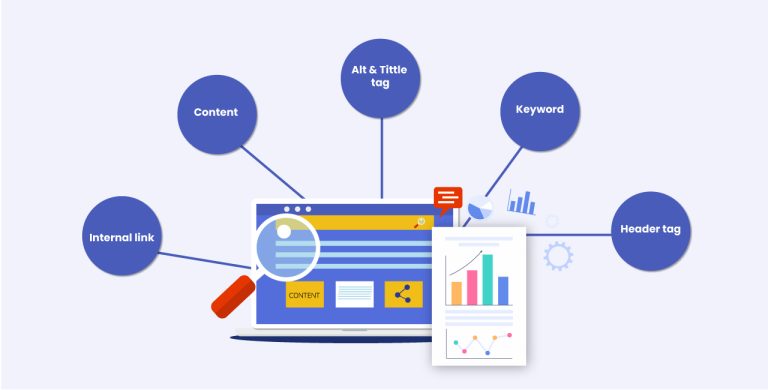Migrating an eCommerce Store is a complex process that can have a significant impact on search engine rankings. It is crucial to understand the challenges involved and develop a strategic plan to maintain organic traffic and visibility during and after the migration.
Failing to address SEO considerations during the migration can result in a drop in rankings, leading to a decline in organic traffic and potential revenue loss. This blog will provide insights and actionable steps to help you maintain your search engine rankings after migrating your eCommerce Store.
Pre-Migration Planning
Thorough pre-migration planning is essential to ensure a smooth transition and minimize any negative impact on SEO. Start by conducting a comprehensive site audit to identify any existing SEO issues that need to be addressed before the migration. This includes checking for broken links, duplicate content, or any technical issues that might affect search engine crawling and indexing.
Additionally, analyze your website's performance data to understand the pages and keywords that are driving the most organic traffic. This information will help you prioritize the migration process and ensure that high-performing pages are given proper attention during the transition.
Finally, create a meticulous redirection plan to preserve link equity and ensure that all old URLs are redirected to their corresponding new URLs using 301 redirects. This will help maintain the SEO value of your existing pages and prevent any loss of traffic or ranking authority.

Choosing the Right Migration Method
Selecting the appropriate migration method is crucial to maintaining search engine rankings. The method you choose will depend on the specific requirements of your eCommerce Store. If you're migrating to a new platform, make sure to choose one that is SEO-friendly and allows you to implement essential SEO elements such as meta tags, canonical URLs, and optimized URL structures.
On the other hand, if you're changing your domain, it's important to consider the potential impact on search rankings. Proper planning and execution, including setting up proper 301 redirects from the old domain to the new one, will help preserve your existing SEO value and ensure a smooth transition.
It's also worth considering the timing of your migration to minimize disruption and avoid peak business periods. By carefully evaluating and selecting the right migration method, you can mitigate any negative impact on search rankings and maintain the visibility and organic traffic of your eCommerce Store.
Implementing the Migration
Once you have completed the necessary pre-migration preparations, it's time to implement the migration process. Start by transferring all relevant data, including product information, images, and customer data, to the new eCommerce platform. Ensure that the data transfer is accurate and complete, paying close attention to any potential issues such as missing or duplicated content.
It's also crucial to set up proper 301 redirects from the old URLs to the corresponding new URLs. This will help preserve the SEO value of your existing pages and ensure that users and search engines are directed to the correct pages on the new website.
Additionally, make sure to maintain the same URL structure or implement logical redirects if any changes are made. This will help search engines understand the relationship between the old and new URLs and minimize any negative impact on rankings. By following a meticulous implementation process, you can ensure a smooth transition and maintain your search engine rankings throughout the migration.
Content and On-Page Optimization
During and after the migration, it's important to review and optimize your content to align with SEO best practices. Start by conducting an audit of your content to identify any gaps or opportunities for improvement.
Update meta tags, including title tags and meta descriptions, with relevant keywords and compelling descriptions. Optimize your product descriptions, ensuring they are unique, informative, and keyword-rich. Consider the use of structured data markup to enhance the visibility of your products in search results.
Additionally, pay attention to on-page elements such as headers, image alt tags, and internal linking structure. By ensuring that your content and on-page elements are optimized, you can improve the relevance and visibility of your eCommerce Store in search engine results pages, ultimately helping to maintain your rankings.

Monitoring and Analyzing SEO Performance
After the migration, it's crucial to closely monitor and analyze the SEO performance of your eCommerce Store. Keep a close eye on keyword rankings, organic traffic, and other relevant metrics to identify any potential issues or areas for improvement. Utilize SEO analytics tools to track performance and set up regular reporting to monitor progress.
If you notice any significant drops in rankings or traffic, investigate the cause and take corrective action promptly. It's also important to monitor for crawl errors and ensure that search engines can access and index your new website properly.
Regularly review your website's performance data and make data-driven decisions to fine-tune your SEO strategies. By closely monitoring and analyzing SEO performance, you can identify and address any issues that may arise and maintain the visibility and rankings of your eCommerce Store.

Post-Migration SEO Checklist
After completing the migration, there are several post-migration tasks to ensure the continuity of your SEO efforts. First, check for any broken links or 404 errors on your website and promptly fix them by setting up proper redirects or updating internal links. Submit an updated sitemap to search engines to ensure they crawl and index your new URLs correctly.
Review your internal and external links and update them as necessary to ensure they point to the correct pages on your new website. Conduct thorough testing across devices to ensure your website is responsive and user-friendly, which can indirectly impact SEO performance.
Finally, keep an eye on algorithm updates and industry trends to stay on top of the latest SEO practices. By following a post-migration SEO checklist, you can address any remaining issues and maintain the search engine rankings of your eCommerce Store.
Ongoing SEO Maintenance
Maintaining your search engine rankings requires ongoing SEO efforts, even after the migration process is complete. Regularly update your website with fresh, high-quality content that is relevant to your target audience and optimized for relevant keywords.
Stay proactive in building high-quality backlinks from authoritative websites in your industry. Monitor for any crawl errors or technical issues that may arise and promptly resolve them. Stay updated with search engine algorithm changes and adjust your SEO strategies accordingly.
Continuously analyze your website's performance data and make data-driven decisions to optimize your eCommerce Store for search engines. By committing to ongoing SEO maintenance, you can ensure the long-term success and visibility of your store in search engine rankings.
Conclusion
Maintaining search engine rankings after migrating your eCommerce Store requires careful planning, execution, and ongoing efforts. By following a well-structured process, including pre-migration planning and the other steps mentioned, you can minimize the impact on your search engine rankings. Optimizing your content and monitoring and analyzing SEO performance will help you maintain the visibility and organic traffic of your eCommerce Store.
Additionally, ongoing SEO maintenance is vital for the continued success of your store in search engine rankings. By implementing these strategies and investing in SEO efforts, you can ensure the long-term growth and success of your eCommerce business.
To further enhance your online presence and optimize your store for search engines, consider using Atcommerce, an eCommerce Store Builder that creates a user-friendly and SEO-optimized website. By combining effective SEO strategies with the unique value proposition of your brand, you can establish a strong online presence, attract organic traffic, and drive growth for your eCommerce business. Contact us now by visiting https://atcommerce.pk





